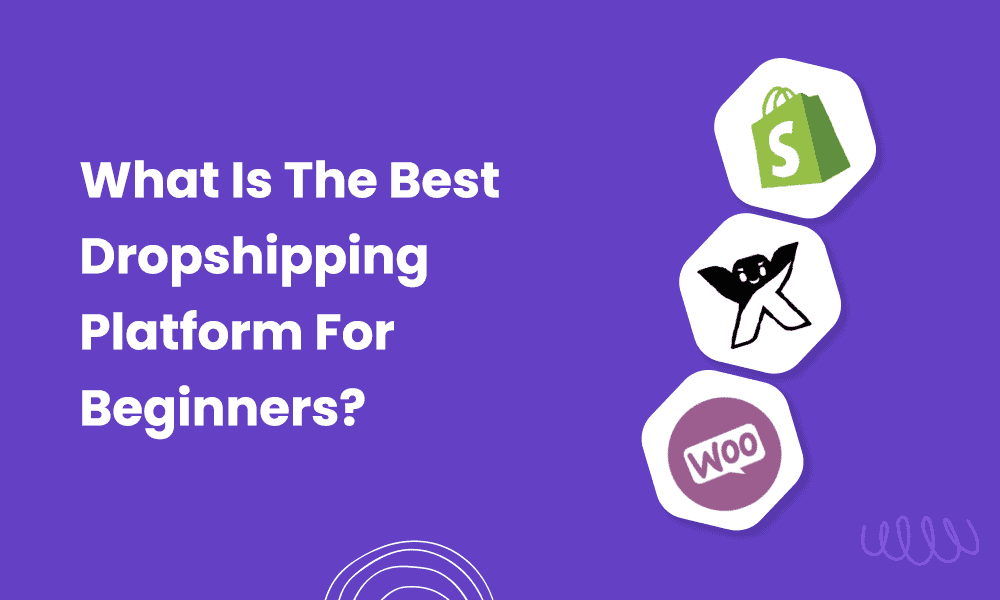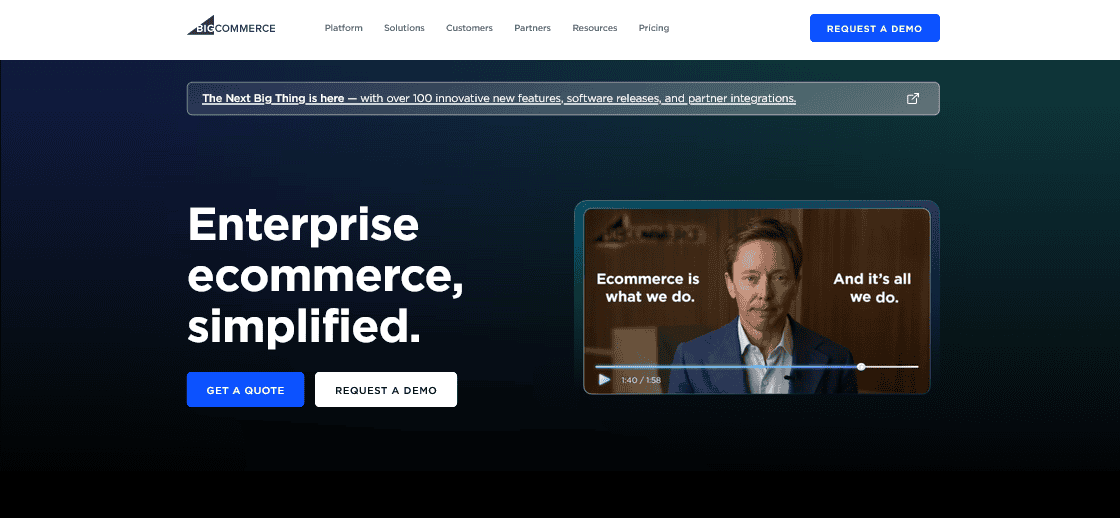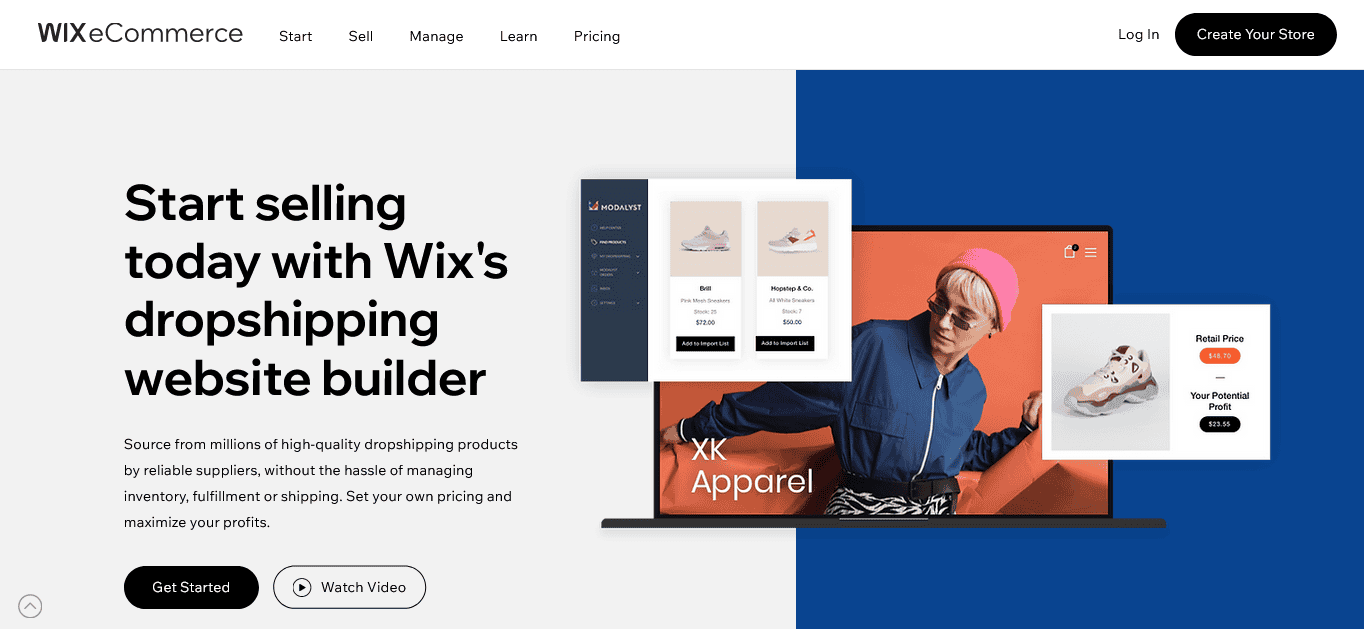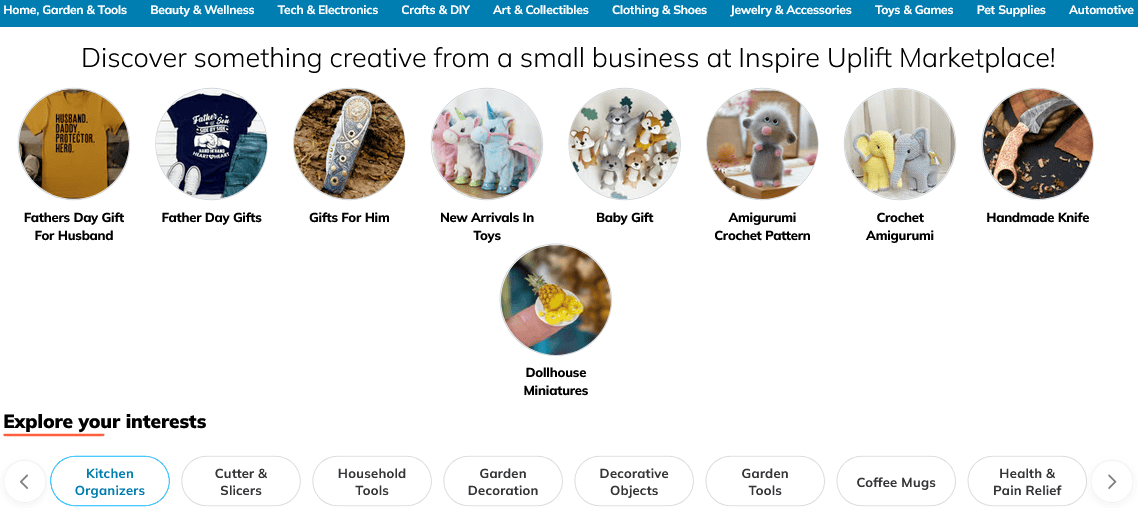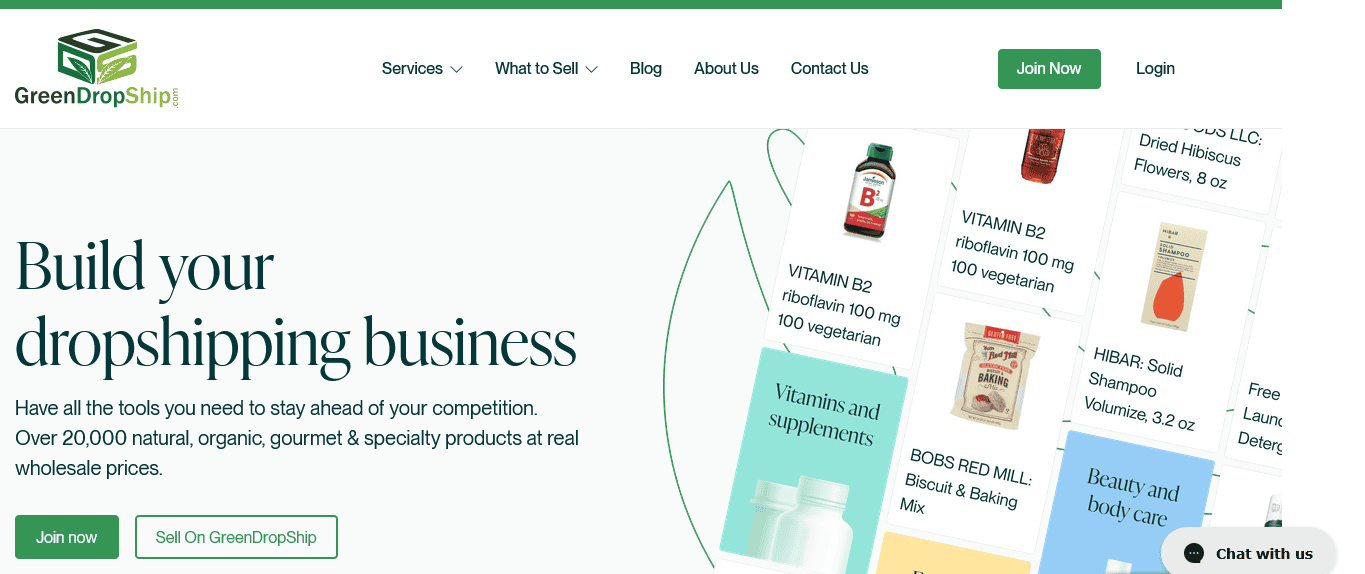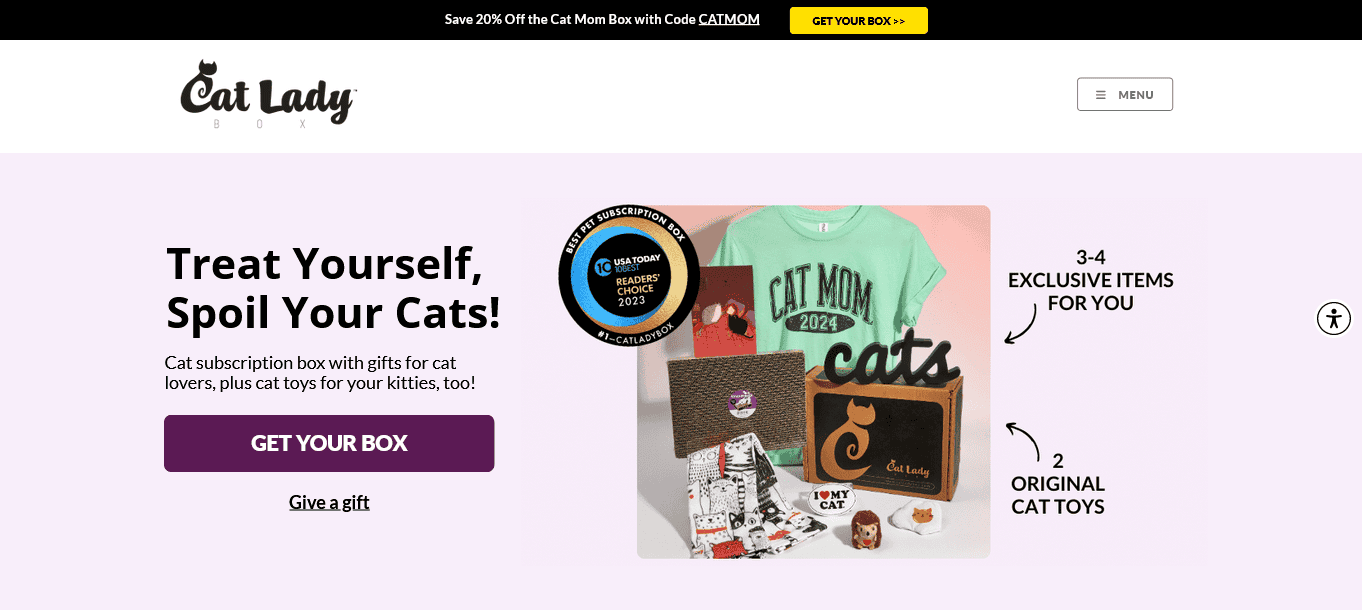According to a report, the dropshipping market will reach about $476.1 billion in 2024. But new dropshippers are asking: What is the best dropshipping platform for beginners?
As we know, dropshipping is an eCommerce model that allows entrepreneurs to sell their products at a particular price without holding any inventory. This model significantly lowers the barriers to entry into eCommerce because it does not need upfront investment, storage, or fulfillment infrastructure.
Regardless of being a low-barrier entry point, choosing the right platform that resonates with your business is necessary. According to Spocket, up to 90% of dropshipping enterprises fail within the first four months, but with the right platform and suppliers, you can ensure long-term success in the dropshipping landscape.
In this article, you’ll learn the following:
- The best dropshipping platforms for beginners
- How to find the best dropshipping platform for your needs
- Niche dropshipping platforms
- How to assess each platform before making a final purchase
Let’s get started!
Table of Contents
Key Takeaways
- Shopify is a user-friendly platform with extensive features and excellent support. Its intuitive nature and comprehensive resources make it ideal for beginners.
- WooCommerce + WordPress plugin comes with a high customizability feature and gives you complete control over the design and functionality of your store. It is suitable for small businesses that require flexibility and a high level of customization.
- BigCommerce is a scalable platform that allows businesses to grow without platform switching. It has built-in features for marketing, SEO, and multi-channel selling.
- Wix, like Shopify, has a user-friendly interface with drag-and-drop functionality. The platform also provides extensive design freedom for creating visually appealing online stores.
Niche-specific platforms like Printful, TeeSpring, Aop+, and Spocket have a unique focus and share little in common with general dropshipping platforms.
Criteria for Selecting a Dropshipping Platform
When vetting the best dropshipping platform for beginners, some factors are critical in deciding on one that aligns with your business goals and needs. Here’s a breakdown of the requirements that can help you make an informed decision.
User-friendliness and ease of setup
When looking for a platform, check for its user-friendliness. A good dropshipping platform for beginners should have an intuitive interface and a straightforward process, enabling beginners with limited technical knowledge to thrive. With easy setup, beginners will not need special training to create and manage online stores.
Moreover, straightforward navigation, customizable templates, and a user-friendly dashboard will contribute to a positive user experience, allowing beginners to focus on growing their business rather than grappling with complex technical problems.
To help you find a user-friendly, easy-to-setup dropshipping platform for beginners, you can check for user reviews and ratings on review platforms. This will help you gauge the overall user experience and how users were able to set up their online stores.
Integration capabilities with suppliers and other eCommerce tools
The integration capability of a platform is one of the core things to look for, especially when deciding on a dropshipping platform as a beginner. So, vet your outlined platforms and see if they possess strong integration capabilities with reputable suppliers and various eCommerce tools.
As a beginner, look for platforms that integrate with supplier networks, such as AliExpress or Oberlo, as they seamlessly help with product sourcing and order fulfillment.
Some other platforms allow for integration with third-party tools, including marketing automation software, customer relationship management (CRM) software like HubSpot and EngageBay, and analytics solutions.
This empowers beginners to enhance the functionality of their store for streamlined operations.
Cost considerations
You must evaluate the platform’s pricing structure, including subscription fees, transaction fees, and any additional costs for premium features. Costs play a big role in platform selection, and as a beginner, you should consider costs carefully to avoid burning holes in your wallet.
Transparent pricing, scalable plans, and a clear breakdown of fees are essential to helping you make informed decisions that align with your budget and business goals.
Customer support and educational resources
A good dropshipping platform for beginners should have reliable customer support and educational resources. Customer support and educational resources are crucial for beginners new to the platform, helping them navigate the complexities of dropshipping.
Additionally, features like live chat, email or phone support, tutorials, webinars, and community forums can empower beginners with assistance and guidance to effectively manage their stores and overcome challenges.
Read also: How To Find Reliable Dropshipping Suppliers: A Quick Guide
Review of Popular Dropshipping Platforms
There are many paid and free dropshipping platforms for beginners, and every one of them is unique, with one thing that makes them stand out. So, here’s a quick look at popular dropshipping platforms for beginners.
Shopify
Most people see Shopify as a top dropshipping platform for beginners. Here are some reasons why. Firstly, the platform offers some of the best sales features, including multi-channel integration options and a customizable shopping cart. On top of that, its user-friendliness, extensive app store for customization, and built-in marketing tools make it stand out.
In addition, it is suitable for beginners because of its intuitive setup and excellent 24/7 customer support. Above all, it allows you to manage your entire inventory, track your product’s stock, and automatically stop selling it when your supplier has sold out of items.
Shopify does not require external hosting and provides free SSL to secure your dropshipping website. You can integrate your Shopify store with over 100+ external payment gateways worldwide, from credit cards to Paypal to Bitcoin.
WooCommerce
For a beginner who is already conversant with WordPress, WooCommerce will be the most suitable option because of its open-source plugin that seamlessly integrates, allowing you to leverage the power of WordPress.
WooCommerce is an open-source platform offering unparalleled customization options through its open-source plugin and an ever-growing library of extensions you can explore to succeed in your dropshipping business. In addition, WooCommerce allows you to have full control over the design and functionality of your online store.
That’s not all. With WooCommerce, you can set up shipping zones, categories, and other details to help you handle the nuances of shipping a product to your customer.
WooCommerce is flexible and allows for seamless operation. Its analytics and reports feature allows you to see sales reports, order reports, and order values. The analytics menu on WooCommerce also gives you insights into store performance, making it an excellent dropshipping platform for beginners.
BigCommerce
BigCommerce is one of the best platforms for dropshipping because of its scalability and built-in features. Also, it comes with most of the solutions you need for your marketing process, eliminating the need to rely heavily on integrations and extensions.
In addition, it integrates with various dropshipping plugins like other platforms, including Spocket, AliExpress, and Modalyst. With BigCommerce, scaling as your customer base grows is a breeze, making it possible to cater to your needs without thinking of switching to another platform.
Above all, it has multiple features, including automatic synchronization of products and orders, built-in search engine optimization tools, email and social media marketing features, and an exceptional multichannel. This makes BigCommerce an excellent dropshipping platform for beginners.
Wix
Wix has emerged as one of the best dropshipping platforms for beginners who want to build an online store. The best part is that you only need a little money to access the platform. It provides a user-friendly website builder that empowers individuals to create a store and an eCommerce experience.
With Wix, you do not need to write a single line of code during your website-building journey because it operates with an intuitive drag-and-drop interface that makes the building and customizing process a breeze. With over 500 customizable templates, Wix gives you unparalleled design flexibility and various design tools that can help you achieve a visually appealing result.
This wide range of design options allows you to tweak every aspect of your site, from color schemes to layout and fonts.
Finally, Wix seamlessly integrates with third-party apps like Modalyst and Spocket, and as your business scales up, Wix scales with you. The platform also has excellent built-in features to help you promote your store.
Read more: The Best eCommerce Platforms for Startups
Niche Platforms for Dropshipping
While big platforms like Shopify, Wix, and others dominate the eCommerce landscape, there are less common platforms that cater to specific market needs within the dropshipping industry.
One famous example of a niche platform is Printful. Printful focuses exclusively on print-on-demand products, a small section of the dropshipping ecosystem. The best part is that it delivers the service better than a general platform.
Benefits of using niche platforms over general eCommerce platforms
Niche platforms are product and service-specific, making it an option for users who want to avoid signing up for a general platform like Wix and Shopify. Let’s look at some benefits of using a niche platform over general eCommerce platforms.
Specialized features
Most niche platforms offer specialized features tailored to specific markets, such as advanced product management tools, industry-specific templates, and customized marketing options. These features allow every dropshipping business to address its unique market needs and differentiate itself from competitors operating on more general platforms.
Targeted audience
By using a niche-specific platform, you will be able to attract users and vendors with a deep interest and expertise in your choice market. This will help foster a community of individuals and businesses. Moreover, this targeted approach can lead to stronger engagement, allow more relevant interactions, and promote a greater sense of community among users and vendors.
Reduced competition
When you use a niche platform, you reduce competition. This is different if you opt for a general dropshipping platform. Consequently, this reduced competition can increase your visibility and give you a better chance to establish yourself as an industry leader within your niche.
Enhanced customer support
General platforms give general customer support. However, niche platforms provide more personalized customer support because they have staff and experts who deeply understand the market’s specific needs and challenges.
This personalized support function can result in more tailored solutions, help you make better resolutions, and open you to a more satisfying experience within the niche.
Optimized for specific products
Niche platforms are usually optimized for the types of products they support. This ensures better performance and a more streamlined user experience. In addition, niche platforms offer your business and customers a more efficient and effective platform for buying and selling specific products by tailoring the features and structure to specific product types.
These are reasons niche platforms are an excellent dropshipping platform choice for beginners.
Examples of niche platforms and what makes them suitable for certain businesses
Many platforms focus on a particular niche and have features that suit certain eCommerce ventures. Here are some examples of niche platforms.
Printful
Printful focuses on Print-on-demand products, which involve custom printing and fulfillment. The platform also offers customizable products like t-shirts, mugs, and phone cases. In addition, Printful integrates with multiple eCommerce platforms, making starting a print-on-demand dropshipping business accessible.
With Printful, entrepreneurs looking to sell custom-designed products without holding inventory can start up without fear.
TeeSpring
TeeSpring is a niche platform for custom apparel and accessories. It empowers you to sell products like T-shirts and hoodies. It primarily focuses on apparel and can handle production, shipping, and customer service.
This enables you to focus on the marketing and design aspects of the business and not have to worry about the logistics involved in production, shipping, and customer care, making it an excellent dropshipping platform for beginners.
Aop+
As a niche-specific platform, Aop+ emphasizes sustainability while offering eco-friendly print-on-demand products. With Aop+, you can access organic clothing options processed using its environmentally friendly printing techniques.
Sprocket
Spocket focuses on dropshipping products from US and European suppliers, ensuring faster shipping times and higher quality standards. This pattern allows customers to receive their orders on time. Spocket offers a wide range of products, from fashion to home decor.
It is a suitable dropshipping platform for beginners because of its reliable shipping strategy, which competes with other platforms.
Integrating Your Dropshipping Platform with Suppliers
The ability of a dropshipping platform to integrate with suppliers is essential. This will help you efficiently manage orders, maintain accurate inventory levels, and drive scalability.
Dropshipping platforms compatible with suppliers are essential for facilitating seamless integrations and optimizing your business’s overall operational efficiency. Let’s examine the importance of seamless dropshipping platform integration for beginners.
Seamless integration for inventory and order management
Integrating with suppliers for seamless inventory and order management is crucial for the success of a dropshipping business. Here’s why.
Efficient order fulfillment
A seamless integration helps streamline your order placement process, making it easier to process customers’ orders accurately. It further helps to reduce the likelihood of errors and ensure that you fulfill orders on time.
Real-time inventory updates
Seamless integration gives you access to real-time inventory updates. This enables retailers to track stock levels and avoid selling out-of-stock products. As a result, customer satisfaction will increase, and backorders will reduce.
Automated shipment tracking
Integrating with third-party apps and platforms facilitates automated shipment tracking and gives your customers real-time updates on their orders, enhancing transparency and trust in the business.
Review of platforms based on compatibility with major dropshipping suppliers
Several platforms offer compatibility with major dropshipping suppliers such as AliExpress, Oberlo, and others.
- Shopify: Integrates especially with Oberlo for AliExpress and supports many other suppliers through apps like Spocket, Printful, and DSers.
- Wix: Provides decent integration capabilities, primarily through Modalyst and Spocket, along with good support for print-on-demand services like Printful and Printify.
- WooCommerce: Highly flexible with numerous plugins like AliDropship and WooDropship for AliExpress, and strong support for various suppliers through plugins like Spocket and Inventory Source.
- BigCommerce: Provides robust integration options with tools like AliExpress Dropshipping by FireApps and Modalyst and seamless print-on-demand services support.
How integration impacts the efficiency and scalability of your dropshipping business
Integration significantly impacts the efficiency and scalability of a dropshipping business in the following ways.
Operational efficiency
Your dropshipping activity becomes automated when you can seamlessly integrate with third-party apps and other platforms. You will no longer need to process orders, manage inventories, or track shipments manually.
Scalability
Integration with product suppliers allows you to handle increased order volumes efficiently. This enables your business to scale up its operations without being hindered by manual processes or challenges from inventory management.
Enhanced customer experience
Integration with an external platform or app enhances the customer experience at your store. From order placement to delivery, integration with other software contributes to customers’ satisfaction and loyalty, which is essential for your growth and scalability.
Marketing Tools and Their SEO Capabilities
Many dropshipping platforms, for beginners and advanced users alike, offer built-in marketing and SEO tools to help you with the complexities of marketing and provide you with an optimized store for search engine visibility. Here’s an overview of the tools offered by each platform.
Shopify
Shopify provides essential SEO tools like product title and description optimization, along with app integrations for email marketing (e.g., Mailchimp), social media marketing (e.g., Facebook Ads), and content marketing (e.g., blogs).
The tools help you reach a wider audience, build brand awareness through social media platforms like Facebook and Instagram, and enable you to create valuable content (e.g., blog posts, product descriptions) that educates potential customers and drives them to your store.
Related article: 16 Powerful Shopify Marketing Strategies To Stand Out
BigCommerce
BigCommerce provides the same marketing and SEO features, like URL editing, meta descriptions, and 301 redirects. Like Shopify, it allows app integration for advanced marketing functionalities like social media, content, and email marketing.
Wix
Wix offers built-in SEO tools, including on-page optimization and keyword suggestions. In addition, it has app integrations for email marketing and social media management. The app integrations for email marketing allow you to build an email list and send targeted campaigns to promote your products and increase visibility.
WooCommerce (self-hosted)
WooCommerce requires more technical knowledge, but it offers the most flexibility in customization and design freedom. You can leverage various SEO plugins, like Yoast SEO, and marketing plugins for email marketing and social media management.
SEO plugins will help your store rank higher in search engine result pages (SERPs) for relevant keywords. This increases organic traffic, which can lead to more sales.
Heads-up: EngageBay Integrates with WooCommerce
Shopify vs Wix vs WooCommerce vs BigCommerce
The effectiveness of these tools depends on your specific needs and technical expertise. Here’s a general comparison.
| Criteria | Shopify | Wix | WooCommerce | BigCommerce |
| Ease of Use | User-friendly interface with built-in tools | User-friendly interface with built-in tools | It requires more technical skills, but it offers the most customization | It is user-friendly with powerful features, and it is suitable for scaling. |
| SEO capabilities | It has technical SEO, built-in SEO, SEO apps, and SEO integrations | Basic SEO features including URL customization, automatic sitemap, and Site Booster for enhanced SEO | Allows for more advanced SEO through plugins | Has basic SEO features and integrations, including FavSEO and Shogun for enhanced capabilities |
| Marketing integrations | It has marketing integration with platforms like SEMrush, Mailchimp, Shopify, etc. | Multiple Integrations with Mailchimp, social media (Facebook Ads), Google Analytics, and HubSpot | Has integrations with many platforms, including Mailchimp for WooCommerce, Yoast SEO, HubSpot, and Agile CRM | Has multiple integrations with many platforms, including Omnisend, Pinterest for BigCommerce, HubSpot, Salesforce, Ahrefs, and Zapier |
| Customizable templates | More than 190 templates covering diverse industries | Over 800 professionally designed templates for different industries | It has an unlimited number of templates due to its integration with WordPress. | Up to 150 free and paid themes with multiple style options |
Mobile Optimization and App Ecosystem
To help the accessibility of your dropshipping website or online store, you must design and develop it for mobile devices like smartphones and tablets.
Mobile optimization ensures a user-friendly experience for people who are accessing your content on the go, and here are some pointers that make it up:
- Mobile responsive design
- Fast loading speed
- Touch-friendly interface
- Offline functionality
The app ecosystem is a world on its own, having multiple connected apps, developers, and users.
Mobile optimization contributes a great deal to the functionality of the app ecosystem in numerous ways, and users can access optimized apps with clear functionalities through this.
App developers can also run essential analyses within the ecosystem to understand user behavior and tailor their apps for better engagement.
Importance of mobile responsiveness for an online store
Mobile responsiveness is one of the factors that contribute to the optimized state of your store, app, or website, and it is essential for the following reasons.
Mobile dominates online shopping
Up to 70% of internet users worldwide have at least one mobile shopping app on their mobile devices, smartphones, or tablets. This means that your store’s lack of mobile optimization limits its potential for success.
Frictionless user experience
Using mobile optimization for your store ensures your customers can navigate easily without encountering a roadblock. Particularly for “near me” searches, providing faster loading times, easy navigation, and essential information upfront helps your online store appear optimized.
A responsive design ensures a smooth browsing and buying experience on any device, as frustration with clunky interfaces or features that don’t work on mobile devices can lead to cart abandonment and lost sales.
SEO benefits
SEO drives traffic, and search engines prioritize the usability of your online stores on mobile devices. They make mobile-optimized websites and online stores rank higher in search results, increasing the visibility of their online presence to potential customers.
Having a mobile-friendly website favored by search engines will improve the opinion of more than 60% of potential customers. A responsive store can improve your search ranking for mobile searches, making it easier for customers to find you.
Improved user satisfaction and experience
Mobile responsiveness enhances user satisfaction and engagement, improving customer experience and increasing sales. When a website’s responsiveness decreases, the percentage of shoppers who return to an online store after a previous purchase will also decrease.
By using mobile optimization, you will cater to the growing popularity of mobile commerce and ensure a seamless viewing experience across devices.
Enhanced conversion rates
Mobile optimization leads to faster page load times, simplified navigation, and streamlined checkout experiences. When your online store or website loads faster and visitors can navigate it easily without roadblocks, it contributes positively to customer retention and your store’s conversion rate.
Increased accessibility
Mobile optimization ensures that the online store is accessible to a broader audience, including those primarily using mobile devices for online activities. This will expand the potential customer base and sales opportunities in every way.
Faster load times
An online store that is properly optimized will load faster. Faster load times will decrease bounce rates and increase the likelihood of conversions. A well-optimized mobile store with an increased likelihood of conversions will lead to improved sales performance.
Social media integration
When your online store is optimized for mobile experience, it seamlessly integrates with social media platforms, allowing for an interactive and shareable experience. The interactive experience helps drive traffic and sales through your social channels.
Availability of Mobile Apps and Third-Party App Integrations
Mobile apps and third-party app integrations are significant in an online store. Here are some of the benefits that come with mobile apps and third-party integrations.
Enhanced functionality
Mobile apps and third-party integrations can provide additional functionality such as advanced analytics, personalized recommendations, and seamless social media integration.
When the functionality is enhanced, it improves the overall customer experience and helps to drive more sales.
Efficient marketing
With mobile apps, businesses can leverage push notifications and location-based marketing to deliver targeted promotions and drive customer engagement, increasing sales and revenue.
Omnichannel experience
Mobile apps effectively tie together the omnichannel experience, particularly for businesses with brick-and-mortar stores. They drive people towards conversion by providing a seamless and integrated shopping journey.
Additionally, mobile apps foster customer loyalty through personalized offers and convenient interaction,s including in-app rewards and exclusive content.
In-app payment
In-app payment using advanced technology like Secure Remote Commerce (SRC) ensures secure transactions. This feature provides a convenient payment experience for customers, effectively driving sales when it meets and satisfies their expectations.
Read also: Dropshipping Product Description Guide For Beginners
Inspiring Real-World Success Stories in Dropshipping
The world of dropshipping is filled with inspiring stories from many people who delved and thrived using the popular dropshipping platforms. Let’s dive into a few examples.
Inspire Uplift (Shopify)
Inspire Uplift, co-founded by Aaron Wallace in 2017, started as a small dropshipping store focusing on unique gadgets and home goods. To help grow the business, they utilized Shopify’s robust platform, which helped them scale quickly through effective social media marketing and influencer collaborations.
The company moved from a Facebook page to a Shopify store and later built a marketplace for other small businesses, offering a wide range of custom apparel and electronics.
Today, Inspire Uplift boasts millions of visitors who visit its online store and complete a purchase, which positively affects its monthly revenue.
GreenDropship (Shopify+WooCommerce)
GreenDropship is a B2B platform connecting emerging natural and organic product brands with online resellers. The business idea was birthed to help cater to the growing demand for eco-friendly goods.
GreenDropship integrates primarily with the Shopify platform, but it does offer a manual method for using its services with a WooCommerce store. WooCommerce’s flexibility and the variety of plugins available helped GreenDropship customize its store to meet specific needs and streamline operations.
The user-friendly state of Shopify’s platform and plug-in dropshipping apps helped GreenDropship not just attract customers but also help them monitor their money and the performance of their store. The company has grown significantly, with a diverse product range and a solid customer base.
CatLadyBox (Wix)
CatLadyBox, owned by Dorian Wagner, started as a local cat shelter. The young founder passed out treats to people, which seemed like a crazy idea then. However, she used Wix, turning her passion for cats into a successful business.
CatLadyBox offers themed subscription boxes for cat lovers, featuring unique items unavailable in typical stores.
Wix’s pivotal role in providing user-friendly design tools and integration with Printful allowed CatLadyBox to manage inventory and fulfill orders quickly without complications. CatLadyBox has grown and has received accolades, building a loyal community of subscribers.
Read also: Dropshipping Profitability: Exploring the Real Potential of Your Online Business
Lessons and Tips From Beginners Who Grew Their Dropshipping Business
Here are some takeaway lessons and tips from one-time beginners that you can apply as a beginner to your dropshipping business:
Start with a niche
Focusing on a specific market or product category helps you to differentiate yourself from competitors. It also allows you to keep your eyes on a dedicated audience.
GreenDropship’s success in the eco-friendly niche is a perfect example of this. GreenDropship’s success shows the importance of catering to a specific audience with tailored products and marketing.
Leverage platform features
When you fully utilize the features and integrations available on your chosen platform, you can optimize your store’s functionality and customer experience.
Inspire Uplift used Shopify’s robust app ecosystem to enhance their store’s capabilities and streamline operations.
Invest in marketing
Allocate a significant portion of your budget to digital marketing, including social media ads, influencer partnerships, and SEO. By doing this, you will increase brand awareness and experience higher traffic and sales.
For most online businesses, digital marketing and social media have played crucial roles in their growth and customer engagement.
Focus on customer experience
Focusing on customer experience gives you an edge, and to do so, you need to use high-quality product images, detailed descriptions, and excellent customer service.
As a case study, CatLadyBox’s success is partly due to its engaging and user-friendly website design, which was easily achieved using Wix.
Adapt and scale
Be prepared to adapt your strategies based on market feedback and scale your operations as demand grows. Inspire Uplift scaled quickly, utilizing Shopify, by adapting its product range based on customer preferences and market trends.
Features to Look For in a Dropshipping Platform for Beginners
When choosing a dropshipping platform as a beginner, it’s crucial to consider specific business needs and goals. Here are some key points to consider.
Beginner-friendly
For beginners who need to learn more about the technical nature of most platforms, user-friendly options like Shopify and Wix are ideal. They offer extensive support and learning resources.
Customization and control
Some beginners want a 100% customizable platform where they can easily control the outlook and functionality of their online store. In this case, WooCommerce + WordPress is a good option because of its extensive customizability and complete control.
Scalability and built-in features
If you are looking for a platform with a wide range of features and scalability, BigCommerce is a strong contender. It is known for its scalability and has a wide range of built-in features.
Design freedom and ease of use
Wix is an excellent choice if you need a platform that is easy to use. The platform also gives room to those who prioritize design freedom, offering a user-friendly interface with drag-and-drop functionality and various templates for design freedom.
Conclusion
The dropshipping industry is expected to reach $243.42 billion, and a beginner might be scared that there are too many dropshippers. However, it is important to start confidently without considering the vast number of people already in the system.
Choosing the right platform is very important, requiring you to check the platform’s features against your business needs carefully.
Whether you prioritize SEO and marketing tools, user-friendliness, cost considerations, customer support, integration capabilities, or scalability, it’s essential to weigh these factors against your specific goals and requirements.
Doing so will allow you to make the right decision that resonates with your business needs and sets you up for success.
Frequently Asked Questions
1. What is the most accessible dropshipping platform for a complete beginner?
Shopify comes to mind first as the easiest platform because of its user-friendly interface and extensive customization options, which make it ideal for beginners. The platform has streamlined processes that are efficient, scalable, and reliable.
2. How much does it cost to start dropshipping on different platforms?
Like every other business, dropshipping involves cost, which varies across different platforms. You will have to pay a $39/month fee for Shopify. Each platform has its pricing structure and additional fees for services like payment processing and shipping.
3. Can I switch my dropshipping platform if my business grows?
Yes, you can switch your dropshipping platform if your business grows. However, most dropshipping platforms offer scalability options, which cancels the need to switch to another platform. This allows you to opt for more advanced plans with additional features and support for increased sales volume.
4. What are the limitations of using niche dropshipping platforms?
Niche dropshipping platforms, while offering a targeted audience, can limit your product selection. This makes it harder to cater to a broader range of customers or adapt to product trends. They may also have higher fees and product costs compared to general platforms.
Therefore, it is necessary to weigh the benefits of focus against the limitations in flexibility before choosing a niche platform.
5. How do dropshipping platforms handle security and payment processing?
Dropshipping platforms themselves typically do not handle payments directly. Instead, they integrate with secure payment gateways like Stripe or PayPal. These gateways encrypt customer information and handle transactions securely. You’ll need a separate merchant account to accept payments, but the platform should guide you.
Choosing a reputable payment processor is crucial for your business’s security.
